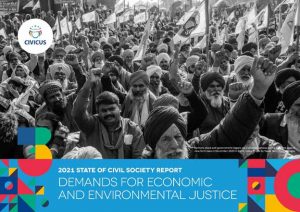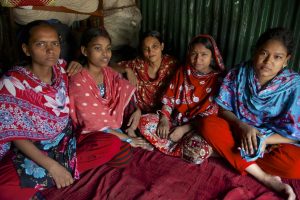By Nilofar SuhrawardyThe Congress-led United Progressive Alliance (UPA) government’s decision to divide Andhra Pradesh to carve out a new state has evoked a mixed response across the country.
If formed, Telangana will be India’s 29th state. The political divide on the formation of the new state was quite palpable on the opening of monsoon session of the Indian Parliament (Aug. 5).While those opposing the move have taken to streets venting their anger, others have raised demand for smaller states in their areas too. Both houses of the Parliament were adjourned for the day as a result of these protests.
Meanwhile, the division of Andhra Pradesh has not gone with many people in the state, creating acrimony and bitterness among people with scores of students sitting on a hunger strike in protest against the move. There is widespread fear that division of the state will spell a loss of employment opportunities for millions in Andhra region. The groups opposing the state’s division plan to continue their protest till the central government withdraws its proposal.
At present, the Congress party has only given a nod for creation of a new state, which is yet to become a reality.
The Congress has apparently declared its support for formation of Telangana with an eye on upcoming general elections scheduled to be held in 2014. The party feels that its decision will pay rich political dividends in the elections. The tense situation, however, does not project bright prospects for those favoring Telangana. It may be recalled that the central government had earlier announced formation of Telangana on Dec. 9, 2009. Violent protests against the decision led the government to put it on hold on Dec. 23, 2009.
More than a dozen Congress legislators from Andhra Pradesh have threatened to quit in protest against the formation of Telangana. They have taken this step under pressure from massive demonstrations in their constituencies. Of these, nine including four union ministers have agreed to take back their resignations after being assured that a high-level panel will be formed to look into the issue.
Those favoring bifurcation of the state, including Telangana Rashtra Samithi (TRS), a regional party, are divided over status of Hyderabad. The center’s proposal states that Hyderabad would be a joint capital city for 10 years. There are also demands over making Hyderabad a permanent joint capital and a change in its regional status to that of a union territory. TRS President Chandrashekar Rao wants administration of Hyderabad to be run by Telangana government.
Clearly, on one hand, the Telangana-proposal has ignited demand for separate statehoods of other groups. At the same time, many regional leaders are against their states being divided into smaller states. The only leader, who has voiced support for formation of smaller states, is former Uttar Pradesh Chief Minister Mayawati.
However, except Uttar Pradesh (UP), which during the Mayawati-led BSP government proposed to create four states dividing the country’s most populous province, no state government has given any recommendation for carving out a new state. When Mayawati was the chief minister, the state assembly had passed a resolution to divide UP into four states, Bundelkhand, Poorvanchal, Pashchimanchal and Avadh Pradesh.
Even though, at present, formation of Telangana seems a distant reality, demonstrations in favor of smaller states have gained momentum in several areas. These include Bodoland from Assam, Gorkhaland from West Bengal, Vidharbha from Maharashtra and Saurashtra from Gujarat, among several others. West Bengal Chief Minister Mamata Bannerjee has strongly rejected demand for division of West Bengal to carve out Gorkhaland.
Similarly, Jammu & Kashmir Chief Minister Omar Abdullah has ruled out prospects of J&K being divided for creation of Jammu as a separate state and union territory status for Laddakh.
Agitations in northeastern India for separate states have assumed serious proportions. Several tribal groups have reinforced their demand for Bodoland in western Assam and state of Karbi Anglong, at present an autonomous district in Assam. The Indigenous Peoples’ Front of Tripura (IPFT) has demanded a separate tribal state for 33 percent population of tribals in Tripura. It is feared that tension sparked by these agitations can assume dangerous proportions for northeastern India. Had the center not announced its proposal for Telangana, the situation may have remained under control.
There also prevails the fear that creation of Telangana as a new state may complicate internal security challenges. It may be recalled that the Bharatiya Janata Party (BJP)-led National Democratic Alliance (NDA) government justified the creation of Jharkhand and Chhattisgarh in 2000 by pointing to their economic development and political stability being threatened by security problems posed by Naxalities. It has been observed by Justice Sri Krishna Commission that new political identity of Chhattisgarh and Jharkhand has not helped the two states, economically and politically. Chhattisgarh “has not been able to control and even contain successfully the violence and extortions perpetrated by the Naxalites,” according to this commission. In 10 years, Jharkhand has had “eight chief ministers, besides being under president’s rule twice. Its economic performance has been dipping steadily and the internal security problems created by the Naxals continue to exist. The unemployment in the state presently is also among the highest in the country.” Telangana, if created, is likely to face similar problems. The five districts of Telangana, facing high Naxal activity, comprise 46 percent of its population. It may not be an easy task for new “state’s” government to control the Naxal menace.
Whatever may be political motive behind the Congress-led central government’s decision to announce formation of Telangana, developments suggest that the party and its allies may be forced to reconsider this decision and put it on hold again, at least for now!
Nilofar Suhrawardy is an Indian freelance journalist who has written extensively for national newspapers. – Arab News/ Eurasia Review




